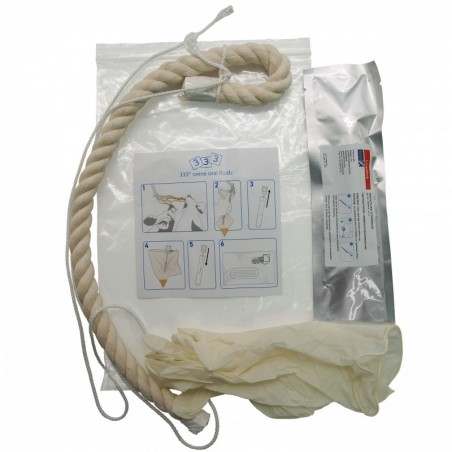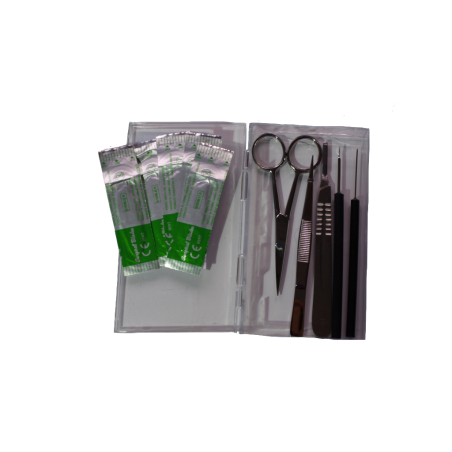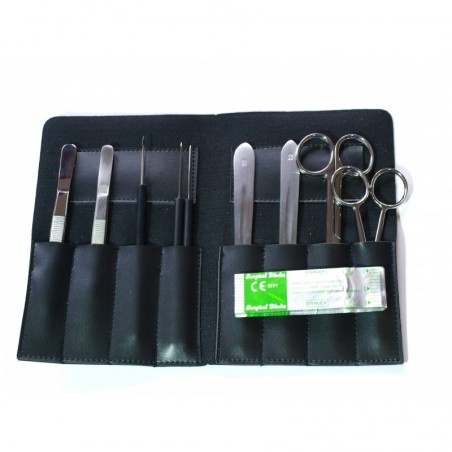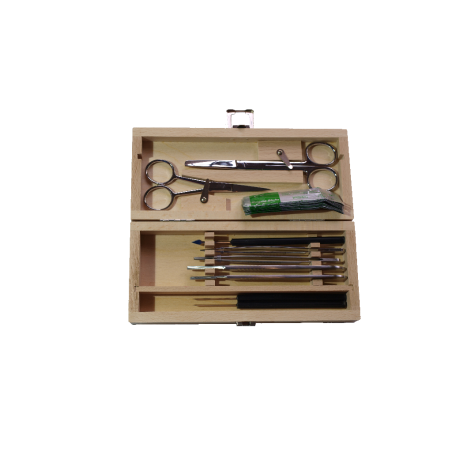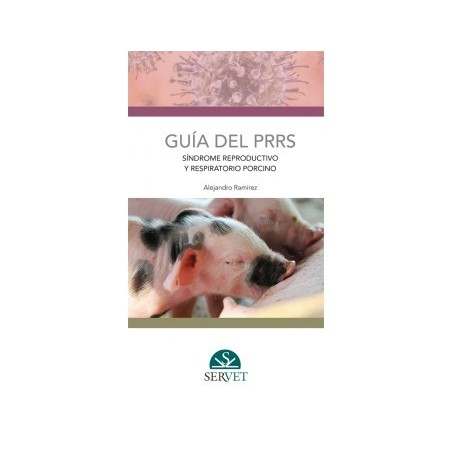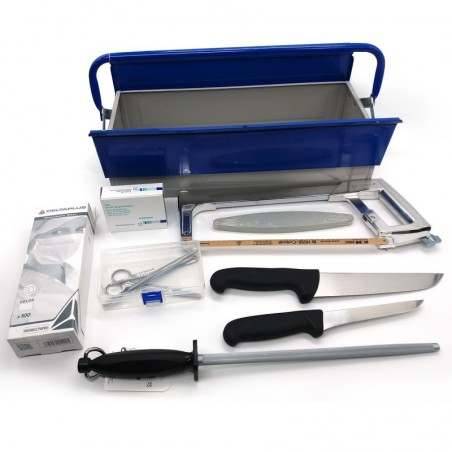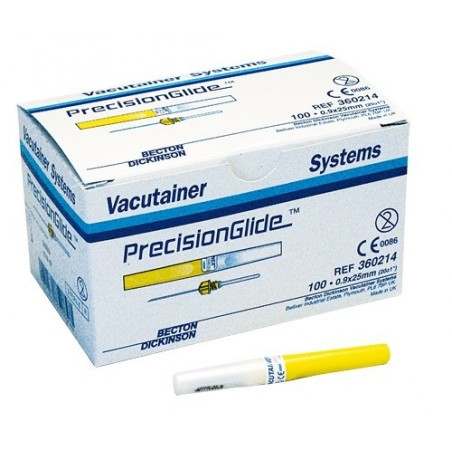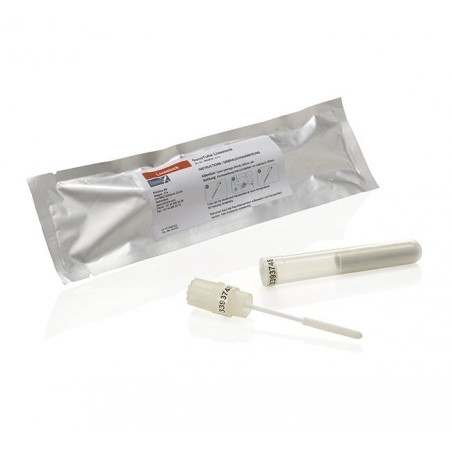Assays available:
Bacterial culture

- Isolation of live organism from tissues with lesions
- Sample types: feces, blood, spleen, lung, liver, lymph nodes
- Pros:
- Bacteria is easy to grow in 1 or 2 days for acute cases
- Easy to do in any lab (including in-house)
- Relative low cost
- Cons:
- Selective enrichment may be necessary for blood samples
- Bacterial growth can be prevented in samples from pigs previously treated with antibiotics
- Feces not reliable for diagnostics for systemic cases
- Shedding is not consistent; there is intermittent shedding over time
Antimicrobial susceptibility
- Tests in vitro ability of live organism to grow under specific concentrations of different antimicrobials
- Sample types: feces, blood, spleen, lung, liver, lymph nodes
- Pros:
- Identification of susceptibility or resistance of specific isolate to common antimicrobials
- Identification of antimicrobial resistance trends
- Cons:
- Requires a bacterial isolate
- In vitro testing may be slightly different than in vivo results
- Some specific antimicrobials may not be tested or require separate, special testing
- Moderate cost
Bacterial serotyping
- Serogrouping occurs based on identification of different O and H antigens on Salmonella isolate
- Pros:
- Serotyping can be done through:
- Use of different antisera
- A polymerase chain reaction (PCR) technique that detects presence of specific sequence of nucleic acids (DNA) associated with specific antigens
- Using microarrays to detect specific DNA sequences for specific antigens
- Helps identify pathogenicity of bacterial isolate based on serotyping associated with specific antigens
- Serotyping can be done through:
- Cons:
- Requires a bacterial isolate
- Moderate cost
Enzyme-linked immunosorbent assay (ELISA)
- Detects presence of antibodies
- Sample types: serum or oral fluids
- Pros:
- Animals remain positive for several weeks
- Can be used in chronic cases
- Can use paired samples to support recent infection
- Cons:
- Specific antibodies detected and timing of detection may vary slightly between the different commercial kits available.
- Can vary from just 3 or 4 days to 3+ weeks for animals to become seropositive; variable time to seroconversion based on serotype and dose of exposure.
- Unable to differentiate vaccine vs. wildtype infection.
- There is no consistent serological response to infection; different serotypes and different doses of infection impact immune response.
- Maternal antibodies can complicate interpretation of results in early nursery stages.
Result interpretation:
Bacterial culture
- Amount:
- Moderate to high: highly suggestive of disease contributor
- Low: questionable value (could be contaminant or nonpathogenic serotype)
- No growth: Animal possibly previously treated with antibiotics, not shedding at that time (intermittent shedding), or not significant contributor
Antimicrobial susceptibility:
- Susceptible: Possible good choice for treatment if antimicrobial can reach target tissue
- Resistant: Select different antimicrobial
- MIC: If MICs are done ensure antimicrobial selected achieves the listed MIC value in the target organ
Serotyping:
- Serotyping allows grouping by serotypes which is very valuable in identifying significance of isolate
Table with the most common serotypes of Salmonella and their respective serogroups.
| Group B | Group C1 | Group D |
|---|---|---|
| Derby | Choleraesuis | Dublin |
| Heidelberg | Infantis | Enteritidis |
| Typhimurium | Newport |
ELISA
- Positive:
- Past exposure to vaccine or wildtype bacteria.
- Can use paired serum samples two to three weeks apart to support recent infection.
- Negative:
- Negative to vaccine or wildtype bacteria exposure.
- Infection too early to detect.
- Low exposure dose.
- Infection with mild serotypes.
- Antibiotic use may suppress bacterial growth resulting in lower exposure dose and lower immune response.
Scenarios:
Growing pigs with diarrhea (acute or chronic):
- Collect fecal samples from 10 or more untreated scouring pigs and pool in groups of 5 and submit for bacterial culture and sensitivity.
- Serotype any Salmonella positive samples.
Growing pigs with systemic disease (with or without diarrhea):
- Necropsy of 1-3 recently dead or euthanize scouring pigs. Collect tissues for bacterial culture (spleen, liver, gastro-hepatic lymph nodes).
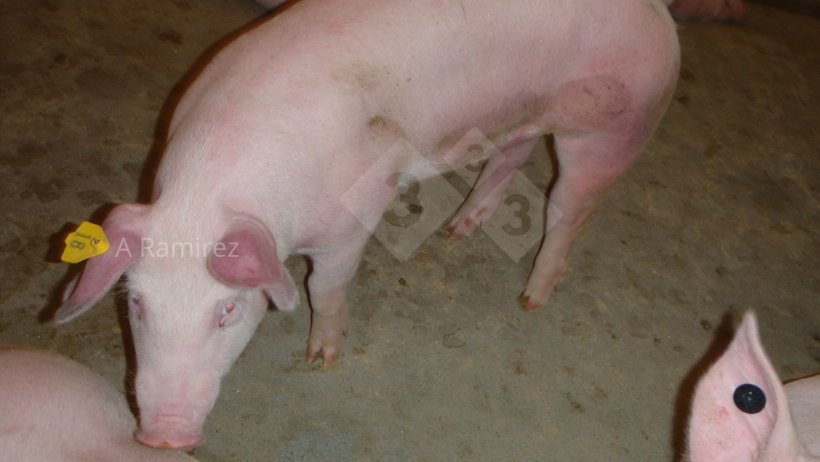

Determining timing of exposure:
- Collect samples from 10-15 pigs at 8, 12, 16, and 20 weeks of age
- Two approaches to collecting:
- Cross-section – collect from different age groups at one time (quicker to obtain results).
- Longitudinal – collect from same pigs over time (results are more accurate for serology interpretation).
- Two approaches to collecting:
- Serum samples test individually via ELISA.
- Fecal samples, pool in groups of 5 based on age group and submit for bacterial culture and sensitivity.
- Serotype any Salmonella positive samples.





